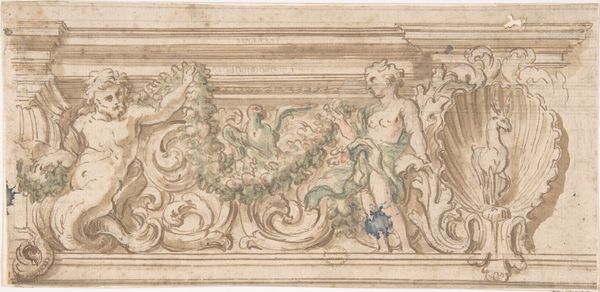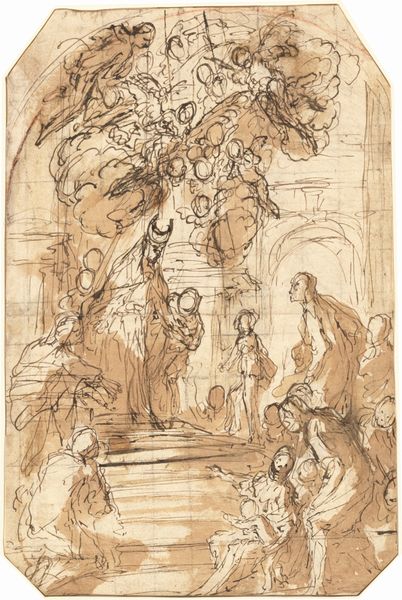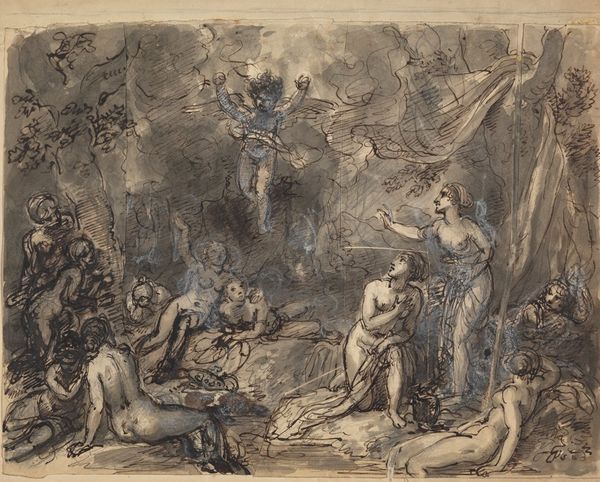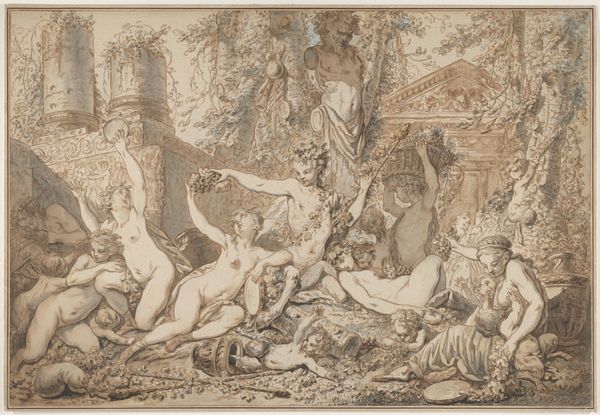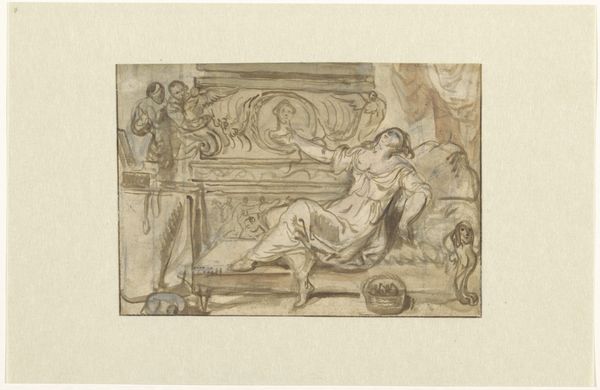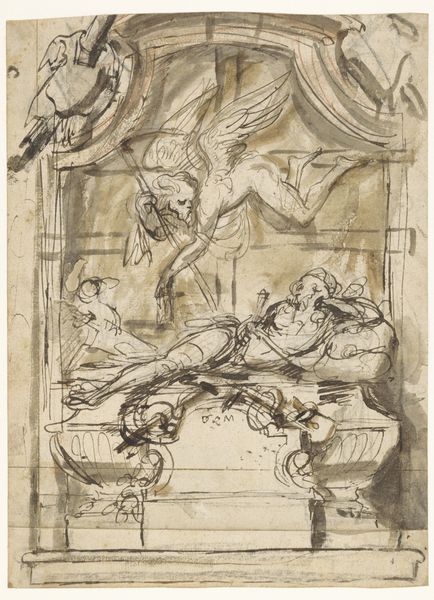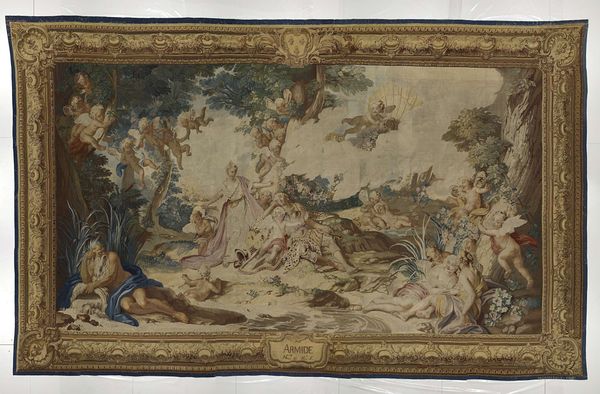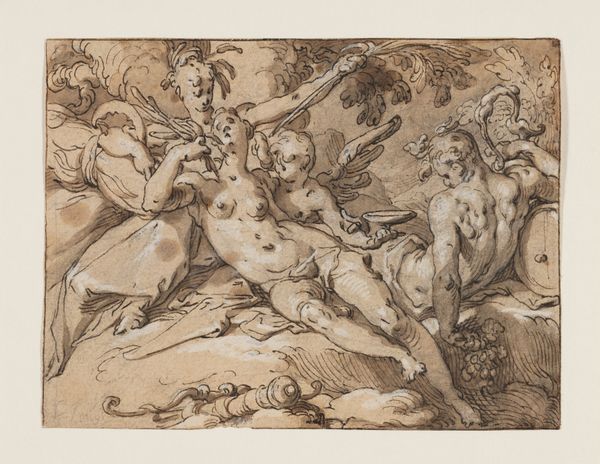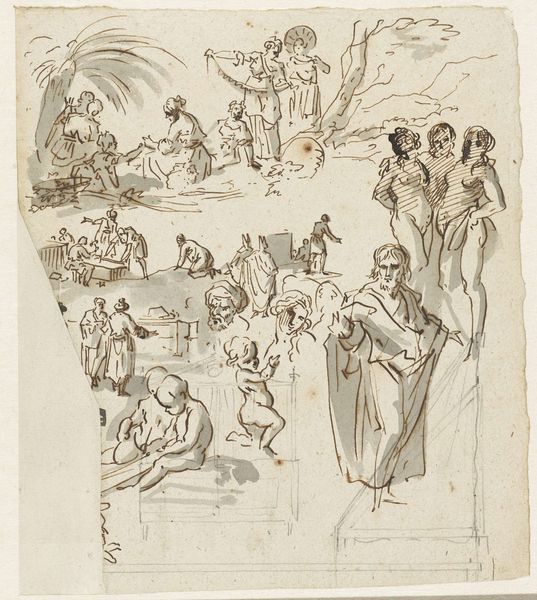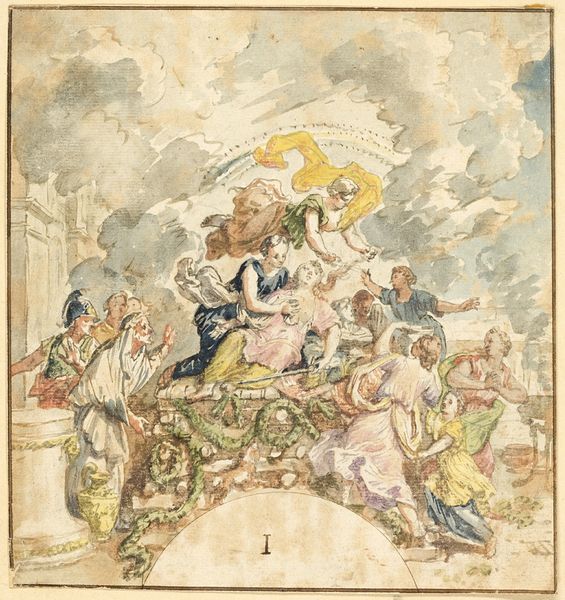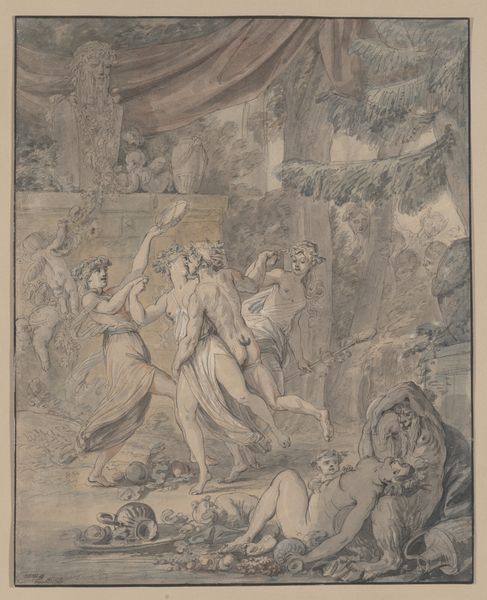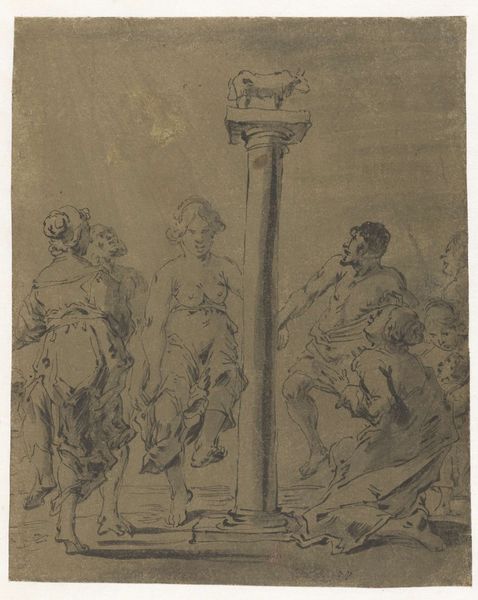
drawing, watercolor
portrait
drawing
water colours
allegory
baroque
figuration
watercolor
history-painting
watercolor
Dimensions: overall: 9.7 x 14.8 cm (3 13/16 x 5 13/16 in.)
Copyright: National Gallery of Art: CC0 1.0
Johann Evangelist Holzer made this ceiling design with allegorical figures, likely in the 1730s, using pen and brown ink with watercolor over graphite. You'll notice that Holzer used thin applications of watercolor, which allow the graphite under-drawing to show through, giving the figures a sense of depth. This technique was favored by artists to achieve lifelike modeling with minimal material. The rapid, loose strokes of the pen capture the allegorical figures and garden architecture, imbuing them with dynamism and energy. The artist seems more interested in the overall impression, than the perfection of details. It’s a sketch, so this makes sense. The drawing feels spontaneous, perhaps capturing a fleeting idea. It’s likely that Holzer executed the drawing quickly, making efficient use of the materials at hand. Understanding Holzer's creative process gives us insight into the artistic practices and aesthetic values during the 18th century, where the emphasis was on efficiency and capturing the essence of a subject with minimal means. By looking closely at the materials and techniques used, we gain a deeper appreciation for the artist's skill.
Comments
No comments
Be the first to comment and join the conversation on the ultimate creative platform.
